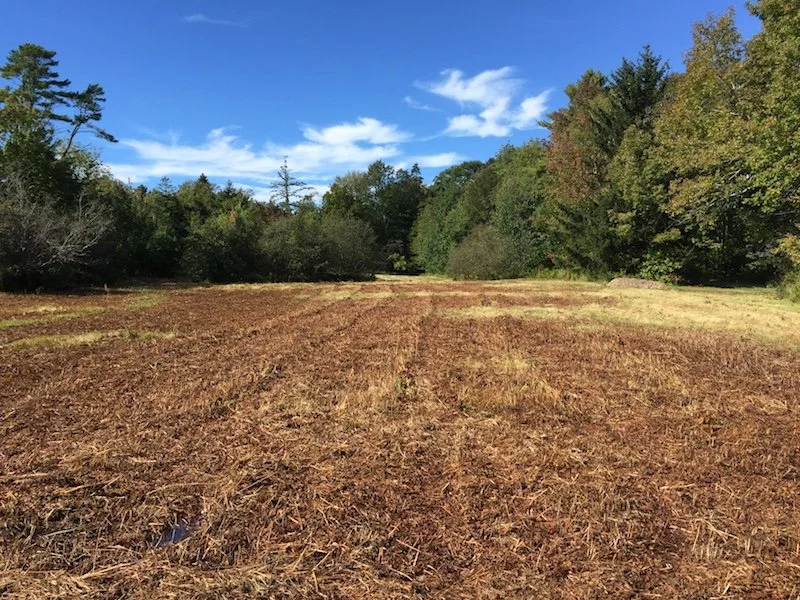My YIMBY Project: Habitat and Painting Practice
Here in Lincolnville, the back field’s been mowed and the front meadows await their turn, awash in goldenrod and asters. It’s a visual confusion of color and texture that provides habitat and opportunity for new paintings.
I'm not much of a gardener in the traditional sense, so this time of year, the meadows and stream banks between my house and the road are overrun with fading goldenrod and still-blooming asters. It's a visual confusion of color and texture that provides food and shelter for many small mammals, birds, and butterflies, both local and migratory. I'll leave the center meadows unmowed for a while longer. But the back field's been bush-hogged, and it's possible to walk to the far property line to check out the low bush blueberry patch and bayberry shrubs that grow there.
As I walk, I daydream. I envision a path around the perimeter, with stopping points. Just behind the house, two boulders sit one on top of the other. They came out of the rain garden when it was dug. The blueberry patch near the back west corner of my property is a secluded place that exudes a particular energy. Along the northwest line, a single tamarack rises against the sky. Returning in the opposite direction to the front meadows, the habitat changes. Pine, spruce and cedar are followed by red oak, already massive, and red maples resprout from trees long gone. Across the orchard, and on up toward the lower southwest side below a seasonal waterfall, a grey dogwood has tripled in size over the years I've been here.
A few years ago, when I was developing materials for a class in drawing the landscape, Kristen Lindquist was kind enough to offer her impressions of this place. She wrote that it is "a natural oasis humming with life and beauty—beyond dragonflies poised on pondside cattails, the perfection of floating water lilies, goldfinch’s chatter, vireo’s endless warbling, waving constellations of Queen Anne’s Lace, scent of sun-soaked sweet fern, and that distant glimpse of the sea— [we] fully understand the underlying structure, geology, and essential personality of a place. By opening our creative selves to connect, through images and words, with the larger, unified world around us, we can inhabit our dual roles as both creators and caretakers."
So here's my plan. As I maintain this habitat for wildlife, I want to make it easier for visitors to enjoy walking. I want to provide a Maine version of Japanese forest-bathing.
For as much as this landscape gives me, in subject matter and inspiration for paintings, I will give back to it, preserving it as habitat and ensuring that the annual succession from swelling buds and March mud, to fall bay and winterberry, to Christmas balsam and spruce, continue on.
This blog was originally published in my newsletter. More text and images here.
